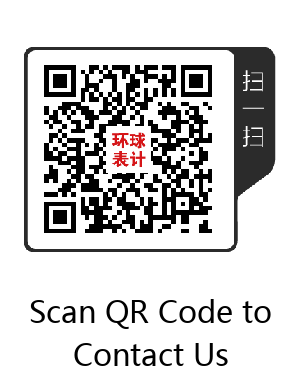When the meter industry itself has not realized that it is becoming the entrance of Internet technology into multiple application scenarios in traditional energy field,
it is also pondering how to develop the most basic bottom-level meter data collection into value-added services and exchange
for income realization in the emerging market of energy Internet, smart energy and electricity sales reform. When the Internet of things
technology takes the lead in choosing the water and gas industry to copy Table as one of the application scenarios.
GSL consulting has been working in the meter industry for many years, has participated in and witnessed every step forward in the electricity, water,
gas and heat industries. If every ten years is regarded as a big node, in the ten years ago,
the industry people were more standing in the industry to see the industry,
and their perspective and thinking would be trapped in a relatively single application scenario and competitive environment. Although they are uncomfortable,
they are also familiar with the industry. In the past decade, due to the involvement of various "outsiders" and the change of market environment,
the growing discomfort and uneasiness forced the industry people to gradually learn to look at the industry from the outside of the industry,
while sticking to the "battle field" once laid down, at the same time sticking out the touch of cross-border edge, embracing changes,
turning the original "competitor" into "partner", and striving to build a good one The ecological chain of positive cycle; in the next ten years,
from the constant innovation of technology and disruptive thinking, whether the Internet of things technology can grasp the demand essence of the
meter industry and give full play to its maximum initiative, "trust" will come from a broader mutual recognition and social effects.
Looking back at the ubiquitous Internet today, without any doubt, everything is so reasonable that we forgot the early economic bubble of the Internet and the
cannon of the pioneers. Maybe the Internet of things technology will experience such "pain" in the traditional meter industry.
No matter the prevention needle or the recovery agent, GSL consulting summarized the stories of the meter industry of the Internet of things seen from different
perspectives, different channels and different development paths in the past two years into this 2019 China Internet of things meter application market report,
hoping to help the meter industry pay attention to it Internet of things technology development, Internet of things technology in the meter industry to play the
greatest value of "peer" reference.
Table of content
Executive Summary
Part One: General Description on China Metering Industry
1.1 Overall Description of China Electricity Metering Market Development
- 1.1.1 Overall description of heat supply and energy saving in China
- 1.1.2 Overview of Electric Power Consumption Information Acquisition Systems
- 1.1.3 Current Development Status of Electricity Meter Manufacturers
1.2 Overview of Tap Water Metering Market Development
- 1.2.1 Water Meter Market Demand in Water Utility Companies
- 1.2.2 Current Situation of Water Meter Reading Market
- 1.2.3 Smart Water Metering Market Development
1.3 Market Development of China Gas Meter Industry
- 1.3.1 Gas Meter Market Demand in Gas Supply Companies
- 1.3.2 Current Situation of Gas Meter Reading System
- 1.3.3 Smart Gas Meter Market Development
1.4 Heat Metering Deployment & Application in Chinese Heat Utility Industry
- 1.4.1 Heat Meter Market Demand in Urban District Heating Industry
- 1.4.2 Heat Metering and CIS Application
- 1.4.3 Analysis of Heat Meter Manufactures
1.5 Non-Utility Metering Market and Application Scenario
- 1.5.1 Current Development Status in Non-Utility Energy Metering Market
- 1.5.2 No-Utility Meter Market Trend Analysis
Part Two: Overall Analysis of IOT Technology & Deployment in China Metering Industry
2.1 LPWAN IOT Technology Development Paths
2.2 Different IOT Technology Comparison
2.3 LPWAN Industry Ecology
2.4 Roles of Traditional Operators & New Type Operators
2.5 Deployment Case Analysis of Different IOT Technologies
Part Three: IOT Metering User Experience Scenarios & Effects
3.1 Electric Power Industry IOT Metering Application Experience
- 3.1.1 Application of IOT Electricity Meter Reading in Power Industry
- 3.1.2 Development of NB-IoT & Lora IOT Technology in Electric Power Industry
- 3.1.3 Analysis from Power IOT to Entire Service Ubiquitous Power IOT
3.2 User Application Experience of IOT Metering in Water Industry
- 3.2.1 IOT Meter Reading Application in Water Utilities
- 3.2.2 Application of IOT in Leakage Management & Smart Water Systems
- 3.2.3 IOT Application in Water Meter Management
3.3 User Application Experience of IOT Metering in Gas Industry
- 3.3.1 Application of IOT in I & C Gas Flow Metering Industry
- 3.3.2 Application of IOT Meter Reading in Gas Utilities
- 3.3.3 Development of IOT Technology in Smart Gas System
- 3.3.4 Analysis of IOT Technology Applied in Gas Utility Intensive Management
3.4 Application Experience of IOT Technology in Heat Supply Industry
3.5 Application Experience of IOT Technology in Non-Utility Fields
- 3.5.1 IOT in Energy Consumption Monitoring Application of Heavy Industry Consumers
- 3.5.2 IOT Applied in Energy Metering Management of Long-rental Apartments
- 3.5.3 IOT in Energy Internet
- 3.5.4 IOT Applied in Innovative Public Utilities
- 3.5.5 Conclusion
4. References





